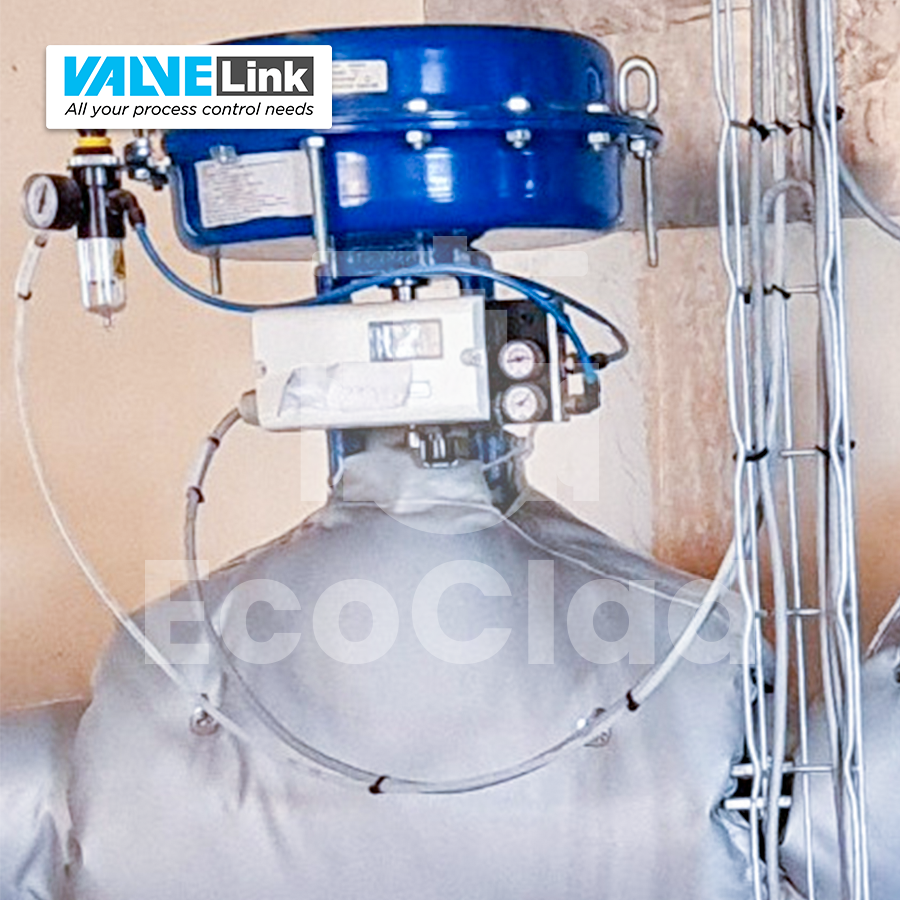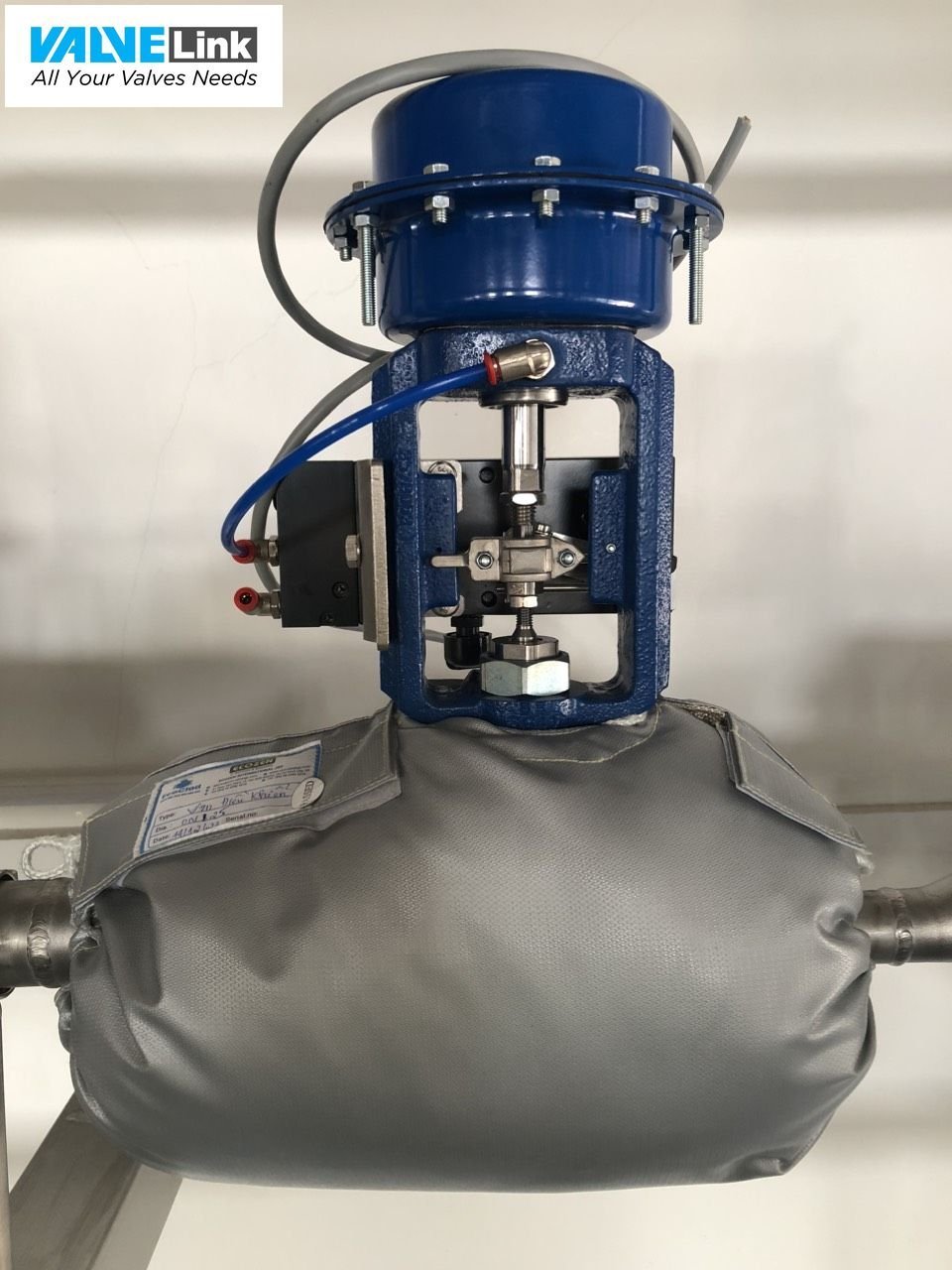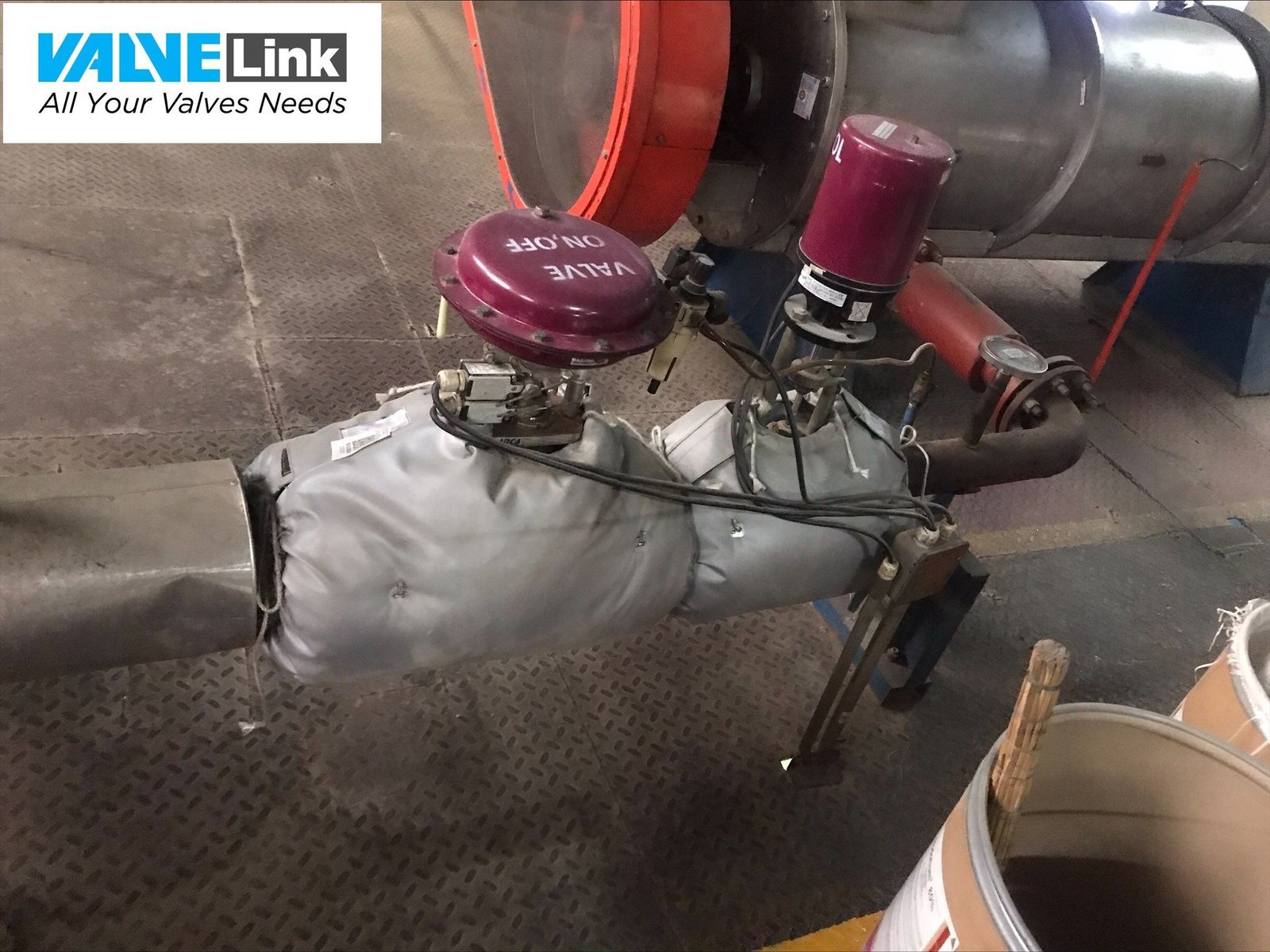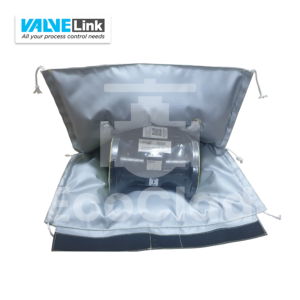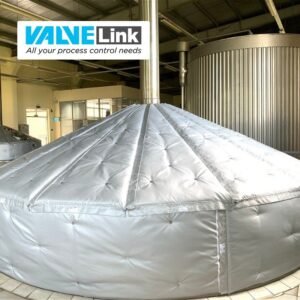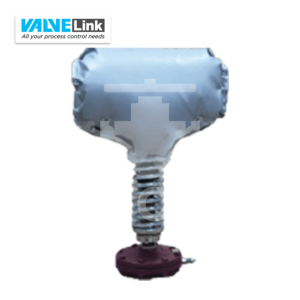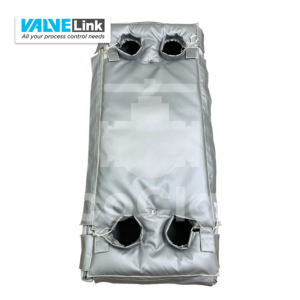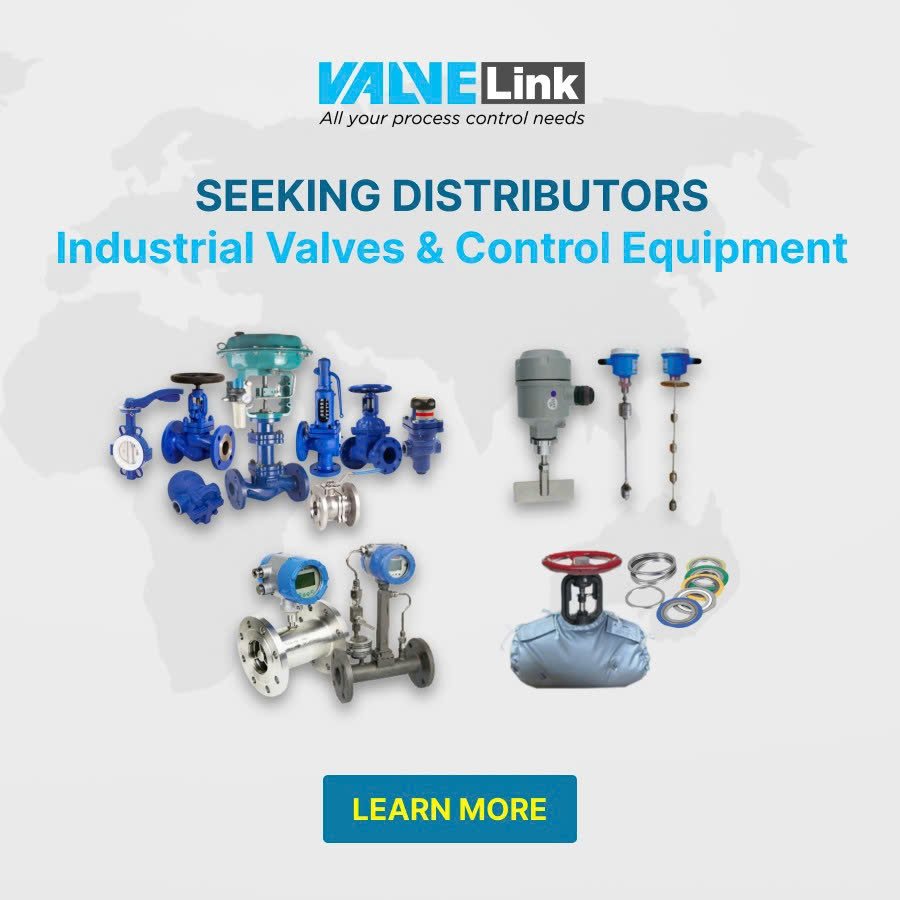Control valves are critical components in industrial processes, responsible for regulating flow to ensure stable and precise operations. However, the unique construction of the valve—comprising a body that is often at a very high temperature, along with a heat-sensitive actuator and positioner—makes insulation a complex challenge. This requires a specially designed insulation solution tailored to each part of the valve and its working conditions.
Challenges in Insulating Control Valves
Protecting and insulating a control valve is not merely about retaining heat; it’s also about ensuring the device operates stably and durably in a harsh environment:
- Complex Hybrid Structure: A control valve has two distinct parts: the valve body, which is in direct contact with hot process fluid, and the top-mounted control assembly, with its electronic, pneumatic, and precision mechanical components that are highly sensitive to high temperatures.
- Overheating Risk for the Control Assembly: Heat from the valve body can transfer and radiate to the actuator, damaging rubber diaphragms and causing sensors and electronic components in the positioner to malfunction, leading to incorrect valve operation or failure.
- Requires Constant Access for Calibration: The positioner and actuator need to be accessed frequently for inspection, calibration, and maintenance. Traditional insulation methods would cover them completely, making this work impossible.
- Significant Energy Loss from the Valve Body: Like other types of valves, the body of the control valve is a major source of heat loss, wasting fuel and affecting the process fluid’s temperature.
The Optimal Solution: Smart Insulation Jackets Designed for Control Valves
A control valve has a unique structure with two distinct parts: the body, which is constantly subjected to high heat, and the top-mounted control assembly with sensitive components that need protection. Based on this characteristic, we developed a smart insulation jacket, specially designed to effectively address both technical requirements:
- Insulating the Valve Body, Maintaining Full Access to the Control Assembly: The insulation jacket is designed to snugly fit the valve body and neck—the areas of highest heat generation. Meanwhile, the actuator and positioner are left uncovered, preventing heat buildup in these components and allowing for easy inspection and calibration without removing the insulation.
- Preventing Heat Transfer to the Control Assembly: Thanks to its effective insulation material, the jacket completely blocks heat transfer from the valve body to the control assembly, reducing the risk of damage from overheating and ensuring that parts like rubber diaphragms, sensors, and positioners operate reliably.
- Reducing Heat Loss, Saving Energy: By limiting the heat radiated from the valve body, the insulation jacket contributes to reducing fuel consumption, helping to maintain fluid temperature, and enhancing overall system efficiency.
- Designed for Convenient Operation and Maintenance: Each jacket is precisely fabricated for a specific valve model and does not interfere with the movement of the valve stem or other mechanical parts. For maintenance, technicians can quickly remove and reinstall the jacket without having to disassemble the entire valve.
- Increasing Equipment Durability and Reliability: In addition to its insulating role, the jacket also helps protect the valve body from dust, impacts, and other environmental factors. Keeping the control valve in a stable condition contributes to improving the accuracy and lifespan of the entire operating system.
Investing in insulation jackets for control valves is a smart technical solution that both saves energy and protects and enhances the durability of the critical equipment in your plant.
Is your control valve experiencing issues with an overheating actuator? Share the valve model with us so we can advise on the most effective protection solution.
